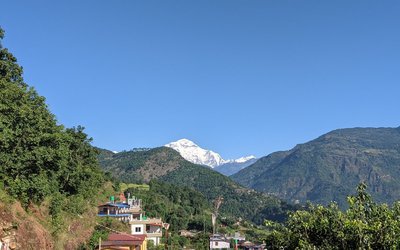As a medical student working at a hospital ward, I go around taking the history of the patients, learning about their diseases and symptoms, and trying to see links with any other past diseases or medical history in the family. I search for any information that would be important for proper diagnosis and treatment.
“I have been suffering from high blood pressure for the last 5 years,” one patient reports. “My father had cancer and he died of it last year,” says another. “I have two siblings and they have both been taking medication for diabetes.”
Such complaints come from patients, sometimes, as young as 30. Curiously, rural people report this kind of medical history more frequently than those living in urban centers.
Had this been a scenario 10 years ago, medical personnel taking the history would have been surprised. Not long ago, we used to hear horror stories about how an entire village was affected by cholera and hundreds of people died of it. People dying of diseases like malaria, diarrhea, etc. were a common phenomenon. Fortunately, these kinds of epidemic of communicable, infectious diseases have been controlled to some extent due to the improvement in the public health measures. But now a new era of disease has begun and that is of the non-communicable diseases. Broadly speaking, non-communicable diseases (NCDs) include cardiovascular diseases, diabetes, cancer, chronic obstructive pulmonary diseases as well as mental diseases. These diseases have definitely caused havoc in the health system by adding burden to the already existing problem of communicable diseases.
Talking about the risk factors of such diseases, these are usually linked with lifestyle related choices, food habits, environmental as well as genetic factors. Although Nepal has always been categorized as a developing country, people's lifestyle seems to be equally fast-paced and hectic as those in Western countries. Up till recently NCDs were thought to be the disease of the Western world and the people in the eastern region remained somewhat unaffected by it. But now, things are rapidly changing. We are getting adapted to the unhealthy lifestyle that is causing these various health hazards. Not only the urban areas, but also the rural areas are very quickly entering into the circle of NCDs. As I talk with my patients, about 50% of whom live outside the valley, they seem to be well informed about such diseases as they give a very clear history of the diseases for themselves or for people in their family. NCDs are becoming a major health issue now mainly due to changing lifestyle of people. That includes rapid urbanization, industrialization, changing food habits and so on. Alcohol and smoking has been identified as one of the major causes as more and more youth are smoking and drinking. Increased life expectancy has led to the increased incidence of NCDs as people get older cardiovascular diseases are bound to accompany the old age. According to the statistics, NCDs are the top cause of death worldwide, killing more than 36 million in 2008. Cardiovascular diseases were responsible for 48% of these deaths, cancers (21%), chronic respiratory diseases (12%) and diabetes (3%).
Looking at this, we can definitely observe that the pattern of diseases in Nepal is changing fast. Immediate action is needed to give people ideas on how to have a healthy life style. A major aspect for a healthy life style is our diet. Someone had very correctly said “You are what you eat”. A healthy lifestyle not only involves proper diet but also physical exercises. It seems that new generation are opting to a sedentary lifestyle, as they are too busy with their study and computer as recreation, and this had also been one of the major contributor for obesity, especially in children. Due to all this, by the age of 30, they start suffering from backache, high blood pressure and high cholesterol.
When we talk about a healthy lifestyle, an equally important part is played by a person’s mental health too. Due to the changing lifestyle, mental health problems are also coming up as a challenge and by 2020 it will be one of the most frequently occurring diseases that will impact the population of the world and obviously Nepal will also have to face the consequences too.
Sharma is a fourth year medical student of Kathmandu Medical College
- TANAHU HYDROPOWER PROEJCT: A Significant Achievement
- Apr 15, 2024
- AMBASSADOR HANAN GODAR: Sharing Pain With A Nepali Family
- Mar 30, 2024
- VISIT OF KfW AND EIB TO NEPAL : Mission Matters
- Mar 25, 2024
- NEPAL BRITAIN SOCIETY: Pratima Pande's Leadership
- Mar 24, 2024
- NEPAL ARMY DAY: Time To Recall Glory
- Mar 15, 2024















